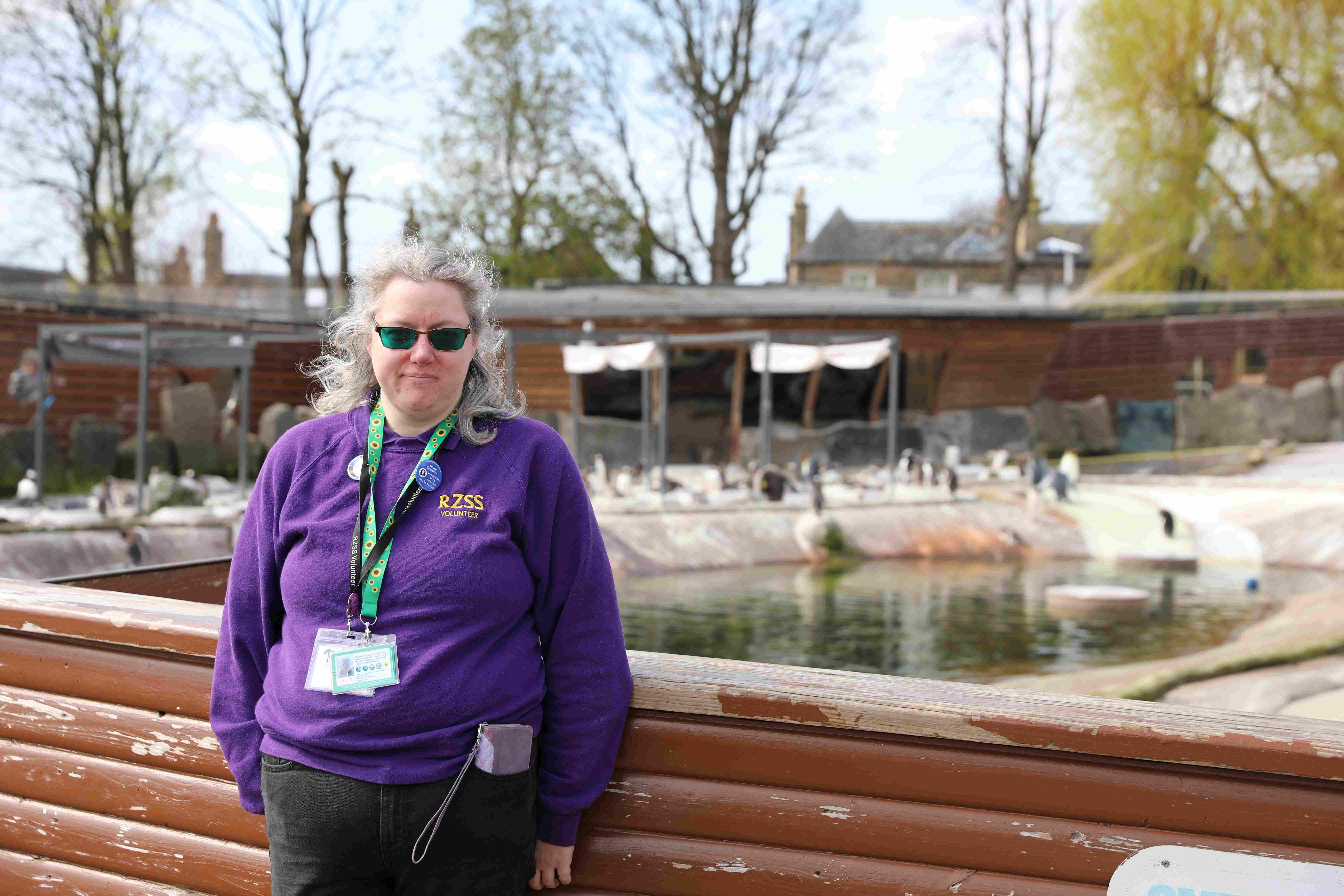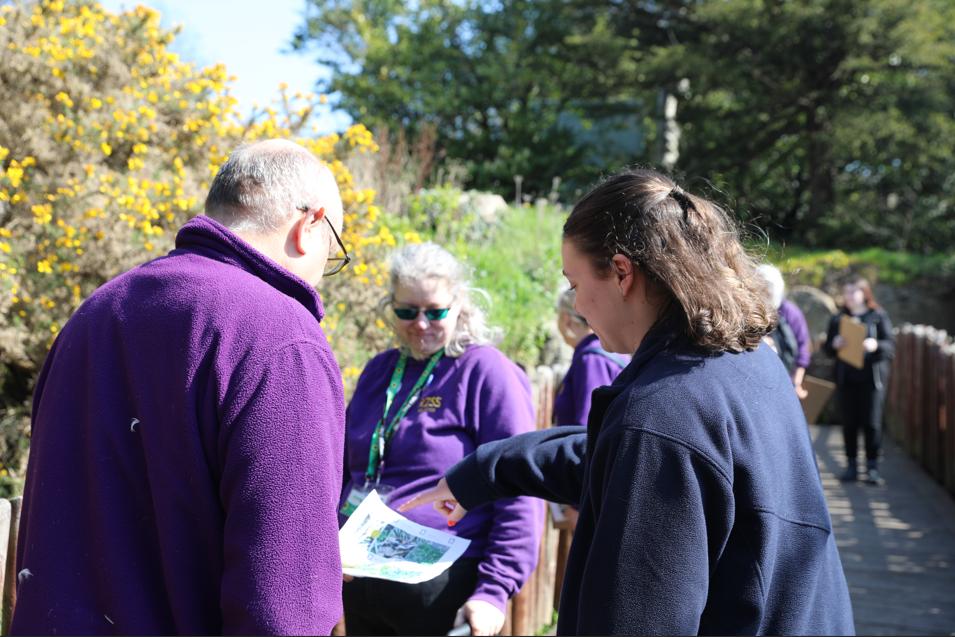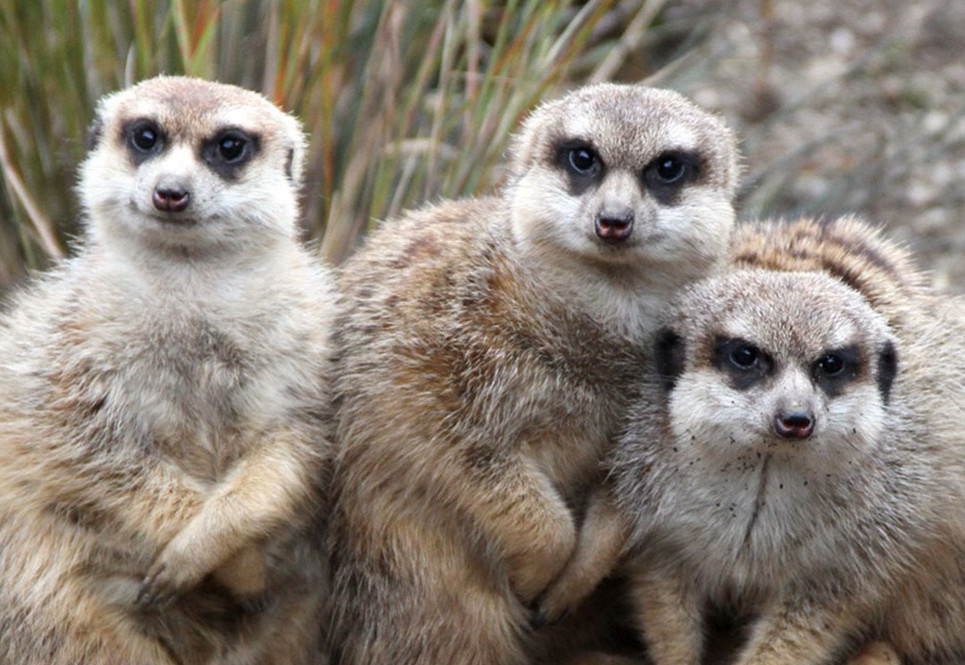My RZSS volunteering experience
Posted 28 Apr 2023 in Edinburgh Zoo

Our volunteers make an incredible impact helping to connect more people with nature. Helen, who has been volunteering since July 2022, is autistic and in this blog she shares how she makes adjustments to make the most of her volunteering experience at Edinburgh Zoo.
My name is Helen and I have been volunteering for the Royal Zoological Society of Scotland (RZSS) at Edinburgh Zoo as a Public Engagement Volunteer since the end of July 2022. I am autistic and along with a large portion of people with autism I also have ADHD but the more subtle inattentive subtype. This means I have some additional challenges (other than the obvious one of the hill) when I volunteer and I have had to figure these out. Despite these I absolutely love the experience. One of my favourites has been watching the two koala joeys grow up from when they exited the pouch.
I applied to volunteer at the zoo as I am an animal lover and I have had some amazing experiences with animals in the wild. Not everyone will get the chances I have had both due to human actions and due to costs. One of the animal encounters I have had is to see the endangered Southern Resident orca superpod. These are now critically endangered. Despite education being challenging due to the way I can communicate knowledge, despite understanding the facts, I absolutely love learning and I want to pass on the knowledge of the animals and the threats they face in the wild to people.
I wanted to give some information about the challenges I face because of being autistic and how I have overcome them. It is important to note that every person with autism is different, both in their challenges in everyday life and how they overcome these. So, what is written is relevant for myself only.
The first challenge I faced was how many hours a week could I volunteer for without completely wearing myself out. This is difficult for me as I have a habit of overdoing things and also because socialisation and being around people is tiring as I have to put a lot of effort in to communicate. I started doing two hours a week, then I went to four and finally six, with occasionally doing more hours if it is for something that sounds interesting to me. However, I am having to drop back to four hours for a short time as six hours is too much for me right now. I have to get the balance between volunteering and doing too much with other things I do, including not neglecting myself. This is the great benefit volunteering has for me.
One of my main challenges is communication. I really cannot understand non-verbal communication and I can be very monotone and bland even when I am excited or enjoying things. I find eye contact painful, but I have ways that I can fake it effectively. Sometimes people who have autism cannot listen, understand and remember verbal information while making eye contact for this reason.
I also have challenges with verbal communication. These are both understanding, as non-verbal communication is very important in communication and being able to explain myself. With pacing of speech I can either speak very fast or struggle with finding words or how to explain things. I have ways around these. I have installed an Augmentative and Alternative Communication (AAC) app on my phone. I have a board which is a whiteboard on one side and a blackboard on the other I can write on. Additionally, I have a set of cards that I can clip on to my bag that has some basic information which I can show to people. One of these cards is a card for when I really need to use AAC. Conversations that are scripted or based on facts are easier, but it still means being able to explain things in the right way. I also have laminated copies of maps to help me direct people (I still cannot reliably tell left from right).

My next biggest challenge is sensory. All my senses are affected in being either over or under sensitive. In addition to these I have issues with bright lights and being able to make out speech in background noise. To get around these I have tinted lenses, which block out bright lights but still let me see without darkening the world around me. They also prevent migraines which is a bonus.
To be able to hear I am doing Auditory Therapy with specially programmed Low Gain Hearing Aids. These are hearing aids that do not amplify sound but act to filter the sounds that are more important, such as those used in speech.
To manage the other signs of sensory overload I keep one fidget toy with me, mainly in a pocket. I chose this fidget toy because it is silent, has different textures and can be used in different ways.
The other sensory challenges I have in the zoo are knowing where my body is in relation to itself and with balance. This combined with another issue common in autistic people, hypermobility, means I use a walker for movement around the zoo. It also gives me a space to sit as I find standing a challenge. Without the walker I need to be able to see and look at my feet in order to walk which has its own issues both for seeing people and talking to them if they need help.
While I have challenges volunteering, it has done me a lot of good. I am becoming more confident. I love being able to help people, albeit in a limited way. Most of all it is the one place internalised ableism (ableism a disabled person uses against themselves) does not cause an issue.
Find out more about volunteering
